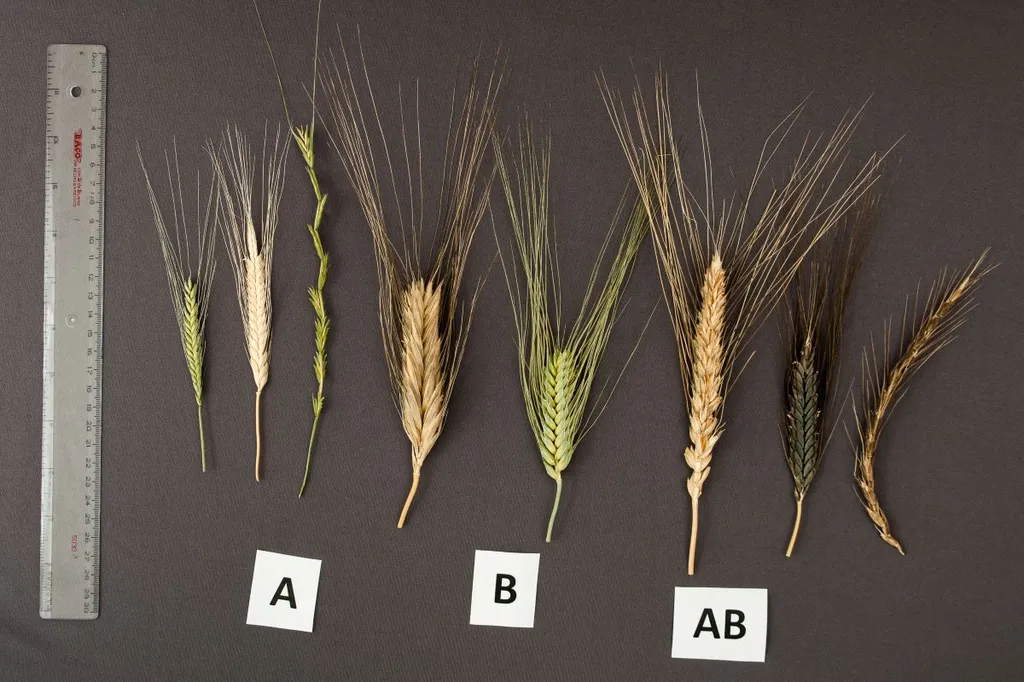In the ever-evolving landscape of agricultural biotechnology, scientists are continually seeking innovative ways to enhance wheat cultivation, a staple crop that feeds billions worldwide. A recent review published in *Frontiers in Plant Science* sheds light on the untapped potential of Aegilops species, particularly those containing the U genome, in wheat breeding. This research, led by Ekaterina D. Badaeva from the Laboratory of Applied Genomics and Crop Breeding at the All-Russian Research Institute of Agricultural Biotechnology, offers a comprehensive look at how these wild relatives of wheat could revolutionize modern agriculture.
Aegilops species, known for their genetic diversity and adaptability, have long been recognized as valuable resources for wheat improvement. The U genome, present in several Aegilops species, is notably rearranged compared to common wheat, posing challenges for direct trait transfer. However, as Badaeva explains, “Despite these complexities, many beneficial genes have been successfully introgressed into wheat, conferring resistance to various diseases and abiotic stresses.”
The review highlights the successful transfer of genes conferring resistance to leaf rust, stripe rust, stem rust, nematodes, and various abiotic stresses. These traits are crucial for enhancing wheat’s resilience in the face of climate change and emerging pests. For instance, genes like Lr9, Lr76, and Yr70 have been introgressed from Aegilops into wheat, significantly boosting its resistance to rust diseases, which are major threats to wheat yields globally.
The commercial implications of this research are substantial. By leveraging the genetic diversity of Aegilops species, breeders can develop wheat varieties that are not only more resilient but also more productive. This could lead to increased crop yields and reduced reliance on chemical pesticides, ultimately benefiting farmers and consumers alike. As Badaeva notes, “The future of wheat breeding lies in the strategic exploitation of these wild relatives, which hold the key to addressing some of the most pressing challenges in agriculture today.”
The methods used to transfer genetic material from Aegilops to wheat are diverse and evolving. Techniques such as interspecific hybridization and alien introgression have been instrumental in this process. The review also discusses the future prospects of these methods, emphasizing the need for continued research and innovation. “The potential of Aegilops species is vast, but realizing this potential requires a concerted effort from the scientific community,” Badaeva adds.
As the agricultural sector faces increasing pressures from climate change, pests, and diseases, the insights provided by this review are timely and relevant. The successful utilization of Aegilops species in wheat breeding could pave the way for more sustainable and productive agricultural practices. By harnessing the genetic diversity of these wild relatives, scientists and breeders can develop wheat varieties that are better equipped to meet the challenges of the 21st century.
In summary, the review by Badaeva and colleagues offers a compelling case for the integration of Aegilops species into wheat breeding programs. The successful transfer of beneficial traits from these wild relatives holds promise for enhancing wheat’s resilience and productivity, ultimately benefiting the entire agricultural sector. As the research community continues to explore the potential of Aegilops, the future of wheat breeding looks brighter than ever.

